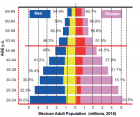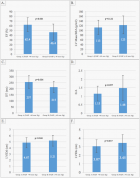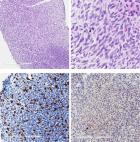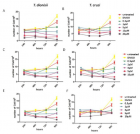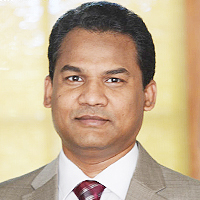Abstract
Review Article
Behavioral transformation through inner conflict resolution: A new Nursing Theory
Thomas A Sharon*
Published: 27 July, 2018 | Volume 2 - Issue 1 | Pages: 001-007
The discipline of Hassidic Philosophy, which emanates from a particular movement in Orthodox Judaism called Hassidism, begins with the premise that all of creation is a dichotomous world of opposites with both sides in a perpetual conflict with one another. The human construct is therefore a dichotomous spiritual entity manifested in the physical world through a mind-body. One side of this soul is the Godly intellect giving rise to the human identity or self-awareness and the other side is the animal soul whose purpose is to galvanize the body. Having learned that this discipline provides its followers with tools for behavioral transformation through inner conflict resolution, I find that it offers a clearer understanding of the spiritual component of holistic health and nursing theory as well as a tool for behavioral transformation that has practical application in nursing practice. Therefore, the purpose of this paper is to present the basic constructs of Hassidism as it pertains to human behavior, demonstrate its compatibility with existing nursing theory and offer a new methodology for advanced practice nurses (APN’s) to assist their clients in achieving behavioral transformation through inner conflict resolution.
Read Full Article HTML DOI: 10.29328/journal.cjncp.1001005 Cite this Article Read Full Article PDF
References
- Roy SC. An explication of the philosophical assumptions of the Roy Adaptation Model. Nursing Sci. 1988; 1: 26-34. Ref.: https://tinyurl.com/yb3nmhw7
- Henery N. Constructions of spirituality in contemporary nursing theory. J Adv Nurs. 2003; 42: 550-557. Ref.: https://tinyurl.com/y8d8ckly
- Reed PG. An Emerging Paradigm for the Investigation of Spirituality in Nursing. Res Nurs Health. 1992; 15: 349-357. Ref.: https://tinyurl.com/y7cktg4r
- Martsolf DS, Mickley JR. The concept of spirituality in nursing theories: differing world-views and extent of focus. J Adv Nurs. 1988; 27: 294-303. Ref.: https://tinyurl.com/y8fob2z5
- Schmieding NJ. Ida Jean Orlando: A nursing process theory. Sage Publications. 1993; 61.
- Henderson V. The Concept of Nursing. J Advanced Nursing. 1978; 3: 113-130. Ref.: https://tinyurl.com/ycnd4cul
- Lutz BJ, Bowers BJ. Response to Patient-Centered Care: Understanding its Interpretation and Implementation in Healthcare. Sch Inq Nurs Pract. 2000; 14: 165-183. Ref.: https://tinyurl.com/y72fzmxj
- Naboisi M, Carson A. Spirituality, illness and personal responsibility: the experience of Jordanian Muslim men with coronary artery disease. Scand J Caring Sci. 2011; 25: 716-724. Ref.: https://tinyurl.com/y8esneaz
- Russell E. Glasgow, PhD, Deborah J. Toobert, PhD, Cynthia D et al. Psychosocial Barriers to Diabetes Self-Management and Quality of Life. Diabetes Spectrum. 2001; 14: 33-41. Ref.: https://tinyurl.com/ydg7sx4f
- Wineberg Y, Lessons in Tanya: The Tanya of Rabbi Schneur Zalman of Liadi. Kehot Publication Society, Brooklyn, New York. 1998.
- Barrett EAM. Power as knowing participation in change. Nursing Science Quarterly. 2010; 23: 47-54. Ref.: https://tinyurl.com/ycanu3ra
Similar Articles
-
A Multidisciplinary Approach to the Assessment and Management of Pre-school Age Neuro-developmental Disorders: A Local ExperienceMichael O Ogundele*. A Multidisciplinary Approach to the Assessment and Management of Pre-school Age Neuro-developmental Disorders: A Local Experience. . 2017 doi: 10.29328/journal.hjncp.1001001; 1: 001-012
-
The Outcome of an ADHD Parenting Group Training Programme (APEG) In the Peterborough Neurodevelopmental Service (NDS)Hani Ayyash*,Michael O Ogundele,Ruth Wisbey,Emma Weisblatt,Lorraine Cuff,Venkat Reddy. The Outcome of an ADHD Parenting Group Training Programme (APEG) In the Peterborough Neurodevelopmental Service (NDS). . 2017 doi: 10.29328/journal.hjncp.1001002; 1: 013-019
-
Dealing with Depression in Family CaregiversWai Hing HUI-CHOI*. Dealing with Depression in Family Caregivers. . 2017 doi: 10.29328/journal.hjncp.1001003; 1: 020-030
-
Caring Difficulties of Parents’ Towards Children with Cerebral PalsyMelike Ertem*. Caring Difficulties of Parents’ Towards Children with Cerebral Palsy. . 2017 doi: 10.29328/journal.hjncp.1001004; 1: 031-033
-
Behavioral transformation through inner conflict resolution: A new Nursing TheoryThomas A Sharon*. Behavioral transformation through inner conflict resolution: A new Nursing Theory. . 2018 doi: 10.29328/journal.cjncp.1001005; 2: 001-007
-
A Case-Study of the Anatomy of a Miscommunication: Why colleagues as patients develop complications?Colin Pritchard*,Jeremy Latham. A Case-Study of the Anatomy of a Miscommunication: Why colleagues as patients develop complications?. . 2018 doi: 10.29328/journal.cjncp.1001006; 2: 008-011
-
Women’s Mental Health and Mental retardationSharadha Ramesh*. Women’s Mental Health and Mental retardation. . 2018 doi: 10.29328/journal.cjncp.1001007; 2: 012-017
-
Effect of spiritual health (Sound Heart) on the other dimensions of health at different levels of preventionMinoo Asadzandi*. Effect of spiritual health (Sound Heart) on the other dimensions of health at different levels of prevention. . 2018 doi: 10.29328/journal.cjncp.1001008; 2: 018-024
-
Best and effective practices of wound care and healing among patients with Diabetes MellitusJefferson Garcia Guerrero*. Best and effective practices of wound care and healing among patients with Diabetes Mellitus. . 2018 doi: 10.29328/journal.cjncp.1001009; 2: 025-031
-
Knowledge, attitude, practice and associated factors towards nursing care documentation among nurses in West Gojjam Zone public hospitals, Amhara Ethiopia, 2018Atsedemariam Andualem*,Tarekegn Asmamaw,Mezinew Sintayehu,Tiliksew Liknaw,Afework Edmealem,Bekalu Bewuket,Mihretie Gedfew. Knowledge, attitude, practice and associated factors towards nursing care documentation among nurses in West Gojjam Zone public hospitals, Amhara Ethiopia, 2018. . 2019 doi: 10.29328/journal.cjncp.1001010; 3: 001-013
Recently Viewed
-
Advancing Forensic Approaches to Human Trafficking: The Role of Dental IdentificationAiswarya GR*. Advancing Forensic Approaches to Human Trafficking: The Role of Dental Identification. J Forensic Sci Res. 2025: doi: 10.29328/journal.jfsr.1001076; 9: 025-028
-
Scientific Analysis of Eucharistic Miracles: Importance of a Standardization in EvaluationKelly Kearse*,Frank Ligaj. Scientific Analysis of Eucharistic Miracles: Importance of a Standardization in Evaluation. J Forensic Sci Res. 2024: doi: 10.29328/journal.jfsr.1001068; 8: 078-088
-
Sinonasal Myxoma Extending into the Orbit in a 4-Year Old: A Case PresentationJulian A Purrinos*, Ramzi Younis. Sinonasal Myxoma Extending into the Orbit in a 4-Year Old: A Case Presentation. Arch Case Rep. 2024: doi: 10.29328/journal.acr.1001099; 8: 075-077
-
Toxicity and Phytochemical Analysis of Five Medicinal PlantsJohnson-Ajinwo Okiemute Rosa*, Nyodee, Dummene Godwin. Toxicity and Phytochemical Analysis of Five Medicinal Plants. Arch Pharm Pharma Sci. 2024: doi: 10.29328/journal.apps.1001054; 8: 029-040
-
Antibacterial Screening of Lippia origanoides Essential Oil on Gram-negative BacteriaRodrigo Marcelino Zacarias de Andrade, Bernardina de Paixão Santos, Roberson Matteus Fernandes Silva, Mateus Gonçalves Silva*, Igor de Sousa Oliveira, Sávio Benvindo Ferreira, Rafaelle Cavalcante Lira. Antibacterial Screening of Lippia origanoides Essential Oil on Gram-negative Bacteria. Arch Pharm Pharma Sci. 2024: doi: 10.29328/journal.apps.1001053; 8: 024-028.
Most Viewed
-
Evaluation of Biostimulants Based on Recovered Protein Hydrolysates from Animal By-products as Plant Growth EnhancersH Pérez-Aguilar*, M Lacruz-Asaro, F Arán-Ais. Evaluation of Biostimulants Based on Recovered Protein Hydrolysates from Animal By-products as Plant Growth Enhancers. J Plant Sci Phytopathol. 2023 doi: 10.29328/journal.jpsp.1001104; 7: 042-047
-
Sinonasal Myxoma Extending into the Orbit in a 4-Year Old: A Case PresentationJulian A Purrinos*, Ramzi Younis. Sinonasal Myxoma Extending into the Orbit in a 4-Year Old: A Case Presentation. Arch Case Rep. 2024 doi: 10.29328/journal.acr.1001099; 8: 075-077
-
Feasibility study of magnetic sensing for detecting single-neuron action potentialsDenis Tonini,Kai Wu,Renata Saha,Jian-Ping Wang*. Feasibility study of magnetic sensing for detecting single-neuron action potentials. Ann Biomed Sci Eng. 2022 doi: 10.29328/journal.abse.1001018; 6: 019-029
-
Pediatric Dysgerminoma: Unveiling a Rare Ovarian TumorFaten Limaiem*, Khalil Saffar, Ahmed Halouani. Pediatric Dysgerminoma: Unveiling a Rare Ovarian Tumor. Arch Case Rep. 2024 doi: 10.29328/journal.acr.1001087; 8: 010-013
-
Physical activity can change the physiological and psychological circumstances during COVID-19 pandemic: A narrative reviewKhashayar Maroufi*. Physical activity can change the physiological and psychological circumstances during COVID-19 pandemic: A narrative review. J Sports Med Ther. 2021 doi: 10.29328/journal.jsmt.1001051; 6: 001-007

HSPI: We're glad you're here. Please click "create a new Query" if you are a new visitor to our website and need further information from us.
If you are already a member of our network and need to keep track of any developments regarding a question you have already submitted, click "take me to my Query."







